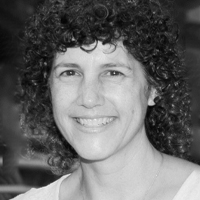Question
Where do we place the device in relation to the client and what are the important considerations when determining device placement in relation to the client?
Answer
We need to determine approximately where it needs to be positioned so that we can choose the right mount. Once the mount is placed on the chair, there's an adjustment to the mount so we can adjust it from there and finesse the final position. But for now, we need to know approximately where it needs to be for optimal visual regard and optimal access.
There are a few more things we need to keep in mind. Ideally, we want to place the device within the boundaries of the wheelchair footprint itself because we don't want this very expensive, fragile device to get bumped while going through a doorway, for example.
We also ideally do not want the device right in front of the client's face. We don't want to block the client's view of their communication partner, what's happening in front of them,, which could be a classroom, and where they are self-propelling a manual chair or driving a power chair. That means sometimes we have to compromise sometimes a little between optimal placement for vision and access, but also not completely blocking someone's visual field.
This Ask the Expert is an edited excerpt from the course, Mounting Assistive Technology to Wheelchairs, by Michelle Lange, OTR/L, ABDA, ATP/SMS
